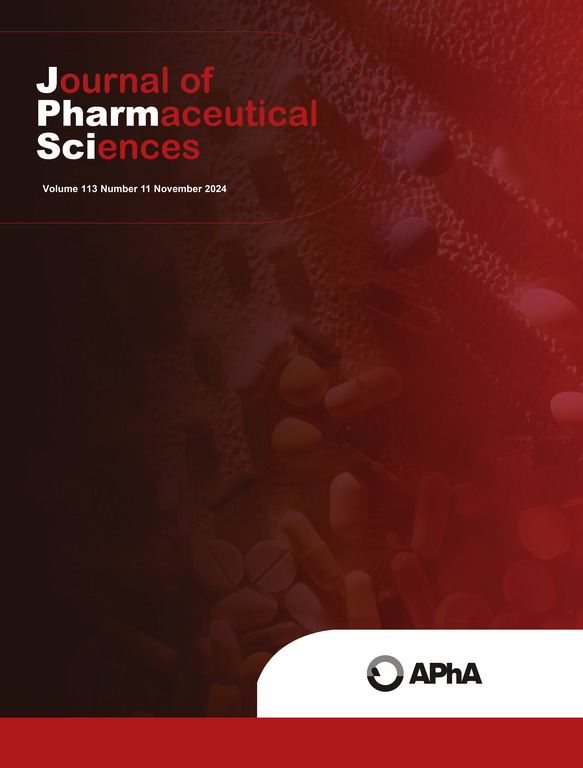羟丙基β环糊精对环肽、醋酸Lanreotide在水中自组装的影响及体外皮下给药模拟器的释放速率
IF 3.7
3区 医学
Q2 CHEMISTRY, MEDICINAL
引用次数: 0
摘要
大多数肽类药物通常是皮下给药。在这种类型的肽管理的显著障碍是配方的高浓度,这可能导致自组装和聚集。这些现象会对多肽药物的生物利用度、制造和注射性产生负面影响。采用羟丙基β-环糊精(Hydroxypropyl β- Cyclodextrins, hp - β- cyd)研究了Lanreotide醋酸酯在高浓度水中的自组装行为,以减轻其自组装并提高其皮下给药的释放率。我们的发现表明,lanreotide/ HPβCyD包合物有效地阻止了lanreotide的芳香-芳香相互作用,从而控制了lanreotide的自组装。这种络合也改变了lanreotide在低剪切速率下的非牛顿粘度行为到牛顿溶液的粘度行为。此外,lanreotide/ HPβCyD包合物在皮下环境中减少了与透明质酸的相互作用,导致高浓度(水中超过3% w/w) lanreotide醋酸盐的释放率显著提高。本文章由计算机程序翻译,如有差异,请以英文原文为准。
Hydroxypropyl β cyclodextrins effects on self-assembly of cyclic peptide, lanreotide acetate, in water and subsequent release rate from an in vitro emulator of subcutaneous delivery
Most of the peptide drugs are often delivered subcutaneously. The significant barrier in this type of peptide administration is the high concentration of formulation, which can lead to self-assembly and aggregation. These phenomena can negatively impact the peptide drug's bioavailability, manufacturing, and injectability. This study investigated the self-assembly behavior of Lanreotide acetate at high concentrations in water using Hydroxypropyl β- Cyclodextrins (HPβCyD) to mitigate the self-assembly and enhance release rate during subcutaneous administration. Our finding demonstrated that the lanreotide/ HPβCyD inclusion complex effectively prevents aromatic-aromatic interactions of lanreotide, thereby controlling self-assembly. This complexation also alters the viscosity behavior of lanreotide from non-Newtonian under low shear rates to Newtonian solution. Furthermore, the lanreotide/ HPβCyD inclusion complex reduces interactions with hyaluronic acid in the subcutaneous environment, leading to significant improvement in the release rate of lanreotide acetate at high concentrations (above 3 % w/w in water).
求助全文
通过发布文献求助,成功后即可免费获取论文全文。
去求助
来源期刊
CiteScore
7.30
自引率
13.20%
发文量
367
审稿时长
33 days
期刊介绍:
The Journal of Pharmaceutical Sciences will publish original research papers, original research notes, invited topical reviews (including Minireviews), and editorial commentary and news. The area of focus shall be concepts in basic pharmaceutical science and such topics as chemical processing of pharmaceuticals, including crystallization, lyophilization, chemical stability of drugs, pharmacokinetics, biopharmaceutics, pharmacodynamics, pro-drug developments, metabolic disposition of bioactive agents, dosage form design, protein-peptide chemistry and biotechnology specifically as these relate to pharmaceutical technology, and targeted drug delivery.

 求助内容:
求助内容: 应助结果提醒方式:
应助结果提醒方式:


